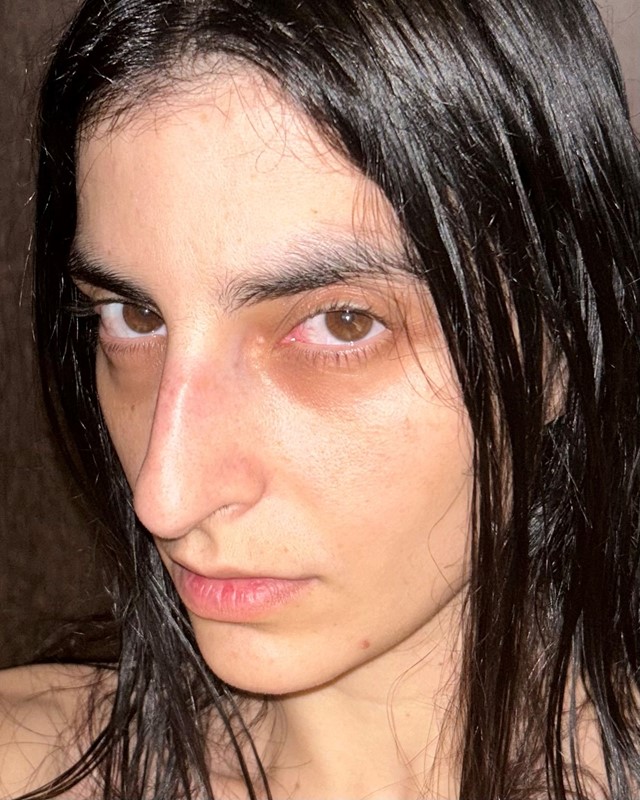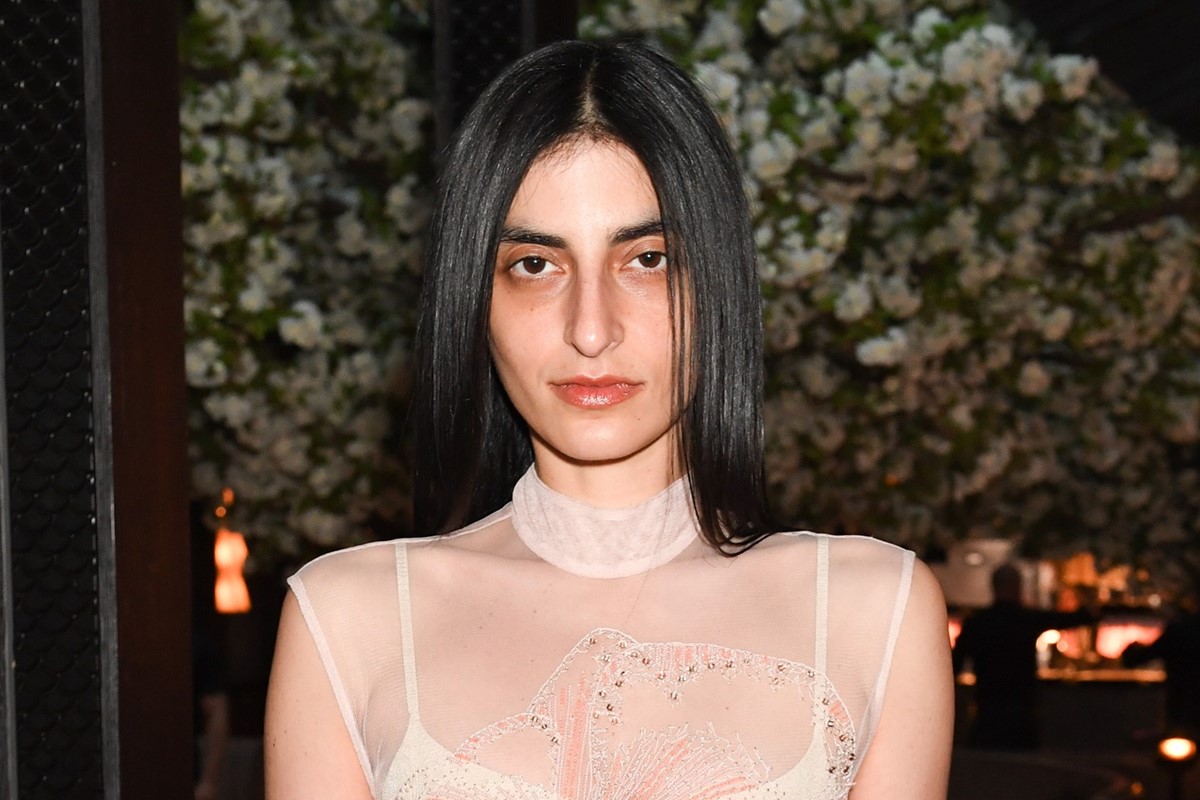With the rise of AI-generated modelling agencies and no copyright protections, many models – like Nassia Matsa – are discovering that they don’t have the rights to their own bodies
I am sitting on the tube on my way to a casting when opposite me I see an ad for an insurance company. The model looks just like me, but something is unsettling about the picture. I’ve never done a shoot for this insurance company, but I recognise my features, and the pose, hair and make-up are similar to a shoot that I did back in 2018 for a Paris-based magazine. I take a picture of the ad but try to dismiss it from my mind. Maybe the model just looks like me and it’s all a coincidence? A few days later, I delete the image as it is making me feel uncomfortable.
A few months have passed when I see a new advert from the same insurance company using a different model. Immediately, I recognise the familiar face of a friend, although her features are once again slightly distorted. This time, I notice a transplanted digital mouth which makes her resemble a mannequin from the uncanny valley. After some research, it slowly dawns on me – we had been AI’ed without our permission; our faces and bodies turned into digital dolls to promote a project we had no part in. And to make matters worse, I can’t even prove it or do anything about it, since the regulation around AI is a grey area. After all, who really owns my face?
Companies have been using AI models for some time now without anyone noticing. Accessing the technology is becoming increasingly easy, and soon it could be as simple as playing around with ChatGPT or trying on the Bold Glamour filter on TikTok. Last year, Sara Ziff, founder of advocacy group The Model Alliance, told The Guardian that they’ve been receiving a growing number of calls from models who were being body scanned and then losing the rights to the image of their bodies. “We’ve particularly heard this from fit models, who are concerned over how their personal information would be used or capitalised on without their permission,” said Ziff.
In the UK, there’s been a similar worry from models over their likenesses being used without their knowledge. “We’ve got a lot of concerned messages asking what could be done,” Elizabeth Peyton-Jones, founder and CEO of Model’s Trust which advocates for safer working environments for models, tells Dazed. “I think there is a lot of fear, but there is a feeling of helplessness.”
It takes just a quick Google to discover the growing number of AI-generated model companies. There’s Deep Agency, which allows someone to create a “digital twin” model by uploading 20 images of a person in various poses. Unless users then delete their images, the uploaded photos will be used to train the platform’s AI model. Then there’s Amsterdam-based agency LaLaLand.ai, which promises to “create models in five minutes” to help brands become more ‘inclusive’: “Present your garments on a diverse range of models. Position yourself as an inclusive brand, increase your engagement, and drive more sales.”
The legal and ethical battles between AI and the creative world have only just begun. While some copyright laws protect things like artwork and music, when it comes to faces and who owns a person’s likeness the lines become more blurred. Models don’t have ownership of images that are taken of them, whether that’s for an editorial, commercial shoot or paparazzi pictures taken without consent – as many celebrities have discovered. In 2019, Emily Ratajkowski was sued for $150,000 for posting an image of herself taken by paparazzi on Instagram. Now, many of these images are part of datasets being used to train and be replicated by AI.
From an ethical point of view, it seems pretty obvious that when it comes to our own data – our face, bodies, bone structure, poses, etc – we should have rights over what it is used for. But legally, what can someone do to protect their face? As many victims of deepfake revenge porn have discovered, oftentimes there isn’t very much that can be done.

“In some jurisdictions, for example the United States, court will recognise a person’s publicity or image rights,” says William Wortley, an associate at Bird & Bird, one of the world’s top law firms when it comes to Intellectual Property. “This enables them to protect aspects of their personal characteristics, including their name, signature, likeness and image. To be able to enforce such a right, they must typically prove that the characteristic they are concerned about can be used to identify them, as well as that they have suffered some commercial harm from its use.”
In the UK, however, Wortley says we do not have a standalone ‘image’ or ‘personality’ right that could enable someone to prevent the replication of their face or image. “As such, someone seeking to prevent the use of their image or likeness needs to look at other ways of doing so.” These other ways could include having the copyright owner of the image – in most cases the photographer – sue for copyright infringement, or make a “passing off” claim which is when a company’s use of someone’s image or work falsely suggests that that person endorses the company’s product. For example, Rihanna successfully claimed passing off against Topshop for producing an image of her on a t-shirt without her permission.
However, because generative AI as an area is still relatively new, legal systems are still trying to catch up with all the implications it brings up around intellectual property and copyright infringements. “Over time, more certainty will hopefully emerge regarding how AI technology can be used, including in respect of the images (or images) of people such as actors and models,” says Wortley.
Aside from the legal questions around what images and likenesses can be used to train AI models, generated AI models have also sparked fears for the future of human models, particularly POC models who seem to be the most at risk from being replaced by digital doppelgangers. Some in the industry remain optimistic, however. “Ultimately I look at this as more of an advancing art form. I do not see this technology replacing the need for real-life models,” my agent Jordan Shiel says. “Fashion campaigns are there to connect the brand with the consumer – mainly through emotion – therefore we are always going to have that need for real-life human models which the audience can aspire to.”

Eugen Boglaru is an AI aficionado covering the fascinating and rapidly advancing field of Artificial Intelligence. From machine learning breakthroughs to ethical considerations, Eugen provides readers with a deep dive into the world of AI, demystifying complex concepts and exploring the transformative impact of intelligent technologies.


